 |
Medicine Lake National Wildlife Refuge |
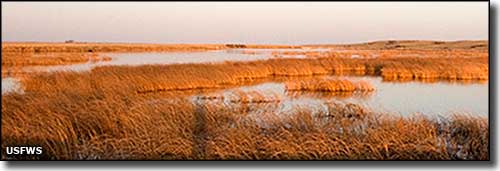 Medicine Lake National Wildlife Refuge |
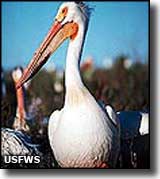
Established in 1935, Medicine Lake National Wildlife Refuge is located in the Central Flyway in northeastern Montana, and sees more than 100,000 birds in the spring and fall migration seasons. This is the prairie pothole region: gently rolling plains with numerous shallow wetlands left behind by the retreating glaciers at the end of the last Ice Age. This area is so productive of waterfowl that it has been recognized as one of the "Top 100 Globally Important Bird Areas in the U.S." by the American Bird Conservancy. The property also became a designated National Natural Landmark in 1980. The birds seen here include great blue herons, American white pelicans, ring-billed gulls, geese, ducks, swans, double-crested cormorants, sandhill cranes and sometimes even whooping cranes. Medicine Lake NWR contains 22 natural and man-made lakes and water impoundments in addition to numerous small wetlands ("potholes") that cover a total of more than 13,000 acres of the refuge. The remainder of the refuge is a rolling mixed-grass prairie and sand dune mix with a few trees in some riparian areas. This sand dune and rolling hills upland area is probably the largest sandhill formation in Montana. More than 273 species of birds have been documented at Medicine Lake National Wildlife Refuge, and about 125 species breed here. One of the largest colonies of American white pelicans on Earth is on this property and special precautions (including a predator-proof electric fence) have been implemented to provide them (and other birds in that area) with better security. Baird's sparrows, chestnut-collared longspurs and Sprague's pipits, all rare grassland birds, nest on the Refuge prairies and attract serious bird-watchers from all over the U.S. Waterfowl hunting is allowed in season along the east side of the refuge. Sportfishing is also allowed on 8 of the lakes, including Medicine Lake. In season, big game hunting is allowed for pronghorn, mule deer and white-tailed deer. You'll also find coyote, beaver, badger, muskrat, pheasants and sharp-tailed grouse on the property. Someone even saw a wolverine on the property back in 1998. The refuge is open from dawn to dusk but there is no camping allowed. Of the 31,702 acres in the Medicine Lake National Wildlife Refuge, 11,366 acres are designated as Medicine Lake National Wilderness. Medicine Lake Wilderness is comprised of 2 sections of the Refuge: one being Medicine Lake and all the islands within the lake, the other being the trail-less upland Sandhill Unit to the southeast of Medicine Lake. Travel in the wilderness is restricted to foot and oar-driven boat, and travel is further restricted during the spring nesting season. |
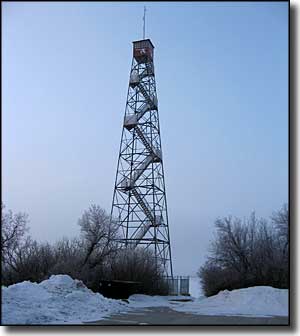
There is a 99'-high observation tower near the headquarters building that overlooks the western half of Medicine Lake NWR. The tower is open year-round, unless weather makes it dangerous to climb the 135 steps to the top. There is also a 14-mile gravelled wildlife drive that begins along the entrance road and skirts the north shore of Medicine Lake before passing other lakes and ponds on its way to the pelican overlook, a universally-accessible viewing platform (with binoculars) that overlooks the American white pelican breeding colonies on Big Island and Bridger Point. There is interpretive signage along the way offering more information about cultural and natural resources you'll see along the route as well as info about refuge management practices. You'll also find an observation blind near the sharp-tailed grouse dancing ground (a particular area of the refuge where male sharp-tailed grouse stomp their feet to make a drumming sound before expelling the air (making an incredible gurgling sound) from a purple sac located on their necks, and then beginning the mating-attraction display all over again). The best time to see this starts before sunrise and runs until they stop (usually 1-to-2 hours after sunrise) from mid-April to the end of May. Visiting the blind is free but you'll need to make reservations at the headquarters office as the blind can only hold 2-4 people at a time. Most gravel roads on Medicine Lake NWR are kept in good condition but they may be temporarily closed if weather creates hazardous conditions. A stretch of Wildlife Drive is usually closed during hunting season (September 30 to January 1) but access to the eastern end of the route is still available via the East Lake Highway. To get there: From US Highway 2 at Culbertson, go north about 23 miles on Montana Highway 16 to the signed refuge entrance. Go east about 2.3 miles on North Shore Road to the refuge headquarters. |
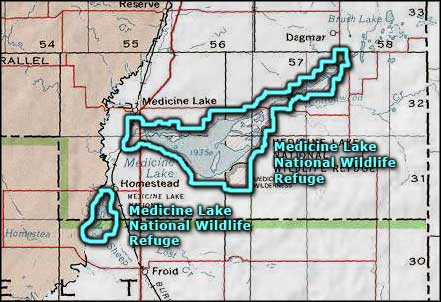 Medicine Lake National Wildlife Refuge area map 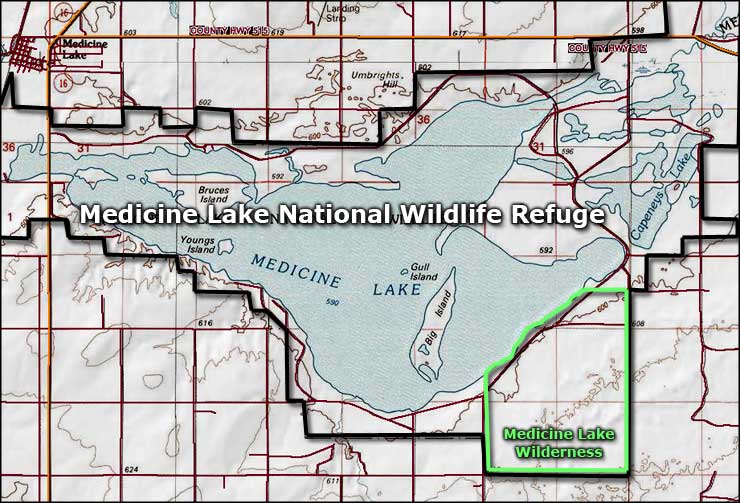 Map of the main part of Medicine Lake National Wildlife Refuge |
|
|

|
| Index - Arizona - Colorado - Idaho - Montana - Nevada - New Mexico - Utah - Wyoming National Forests - National Parks - Scenic Byways - Ski & Snowboard Areas - BLM Sites Wilderness Areas - National Wildlife Refuges - National Trails - Rural Life Advertise With Us - About This Site - Privacy Policy |
| Photos of Medicine Lake National Wildlife Refuge courtesy of the US Fish & Wildlife Service. Photo of the tower at Medicine Lake NWR courtesy of Kate Thompson and the US Fish & Wildlife Service Maps courtesy of National Geographic Topo! Text Copyright © by Sangres.com. All rights reserved. |